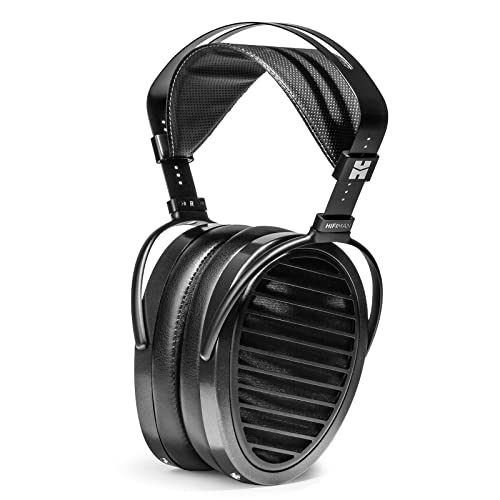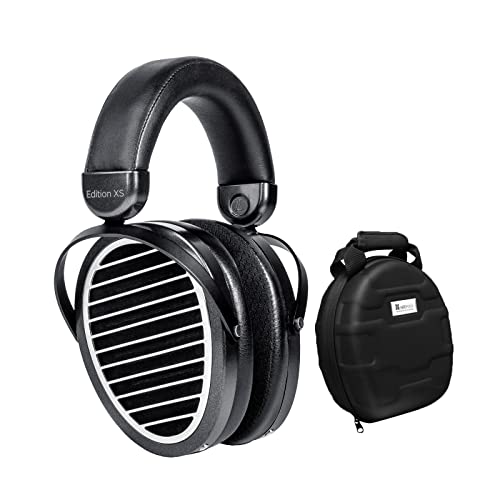14 Cartoons On Headphones Noise Cancelling That'll Brighten Your Day
페이지 정보
작성자 Brayden 댓글 0건 조회 6회 작성일 24-04-10 08:39본문
How Noise Cancelling Headphones Can Improve Your Listening Experience
 Noise cancelling earphones headphones employ microphones to listen for ambient sounds and create an anti-noise sound to counteract unwanted sounds. They are great for blocking out train and plane conversations However, they can't aid in blocking out your friend's chatter or snarling breaks.
Noise cancelling earphones headphones employ microphones to listen for ambient sounds and create an anti-noise sound to counteract unwanted sounds. They are great for blocking out train and plane conversations However, they can't aid in blocking out your friend's chatter or snarling breaks.
Active noise cancellation requires great isolation, either through padding your ears with an earbuds that are sealed or over-ear headphones. We've tested how well they can block lower-frequency sounds such as train and traffic as well.
What is noise cancelling?
Noise cancelling allows listeners to concentrate on their music or audiobook without distraction from background noise. Noise cancelling headphones come with microphones that block outside sounds from reaching your ears. This allows you to listen to your music or audiobook in peace.
Active noise cancellation, also known as ANC is among the most well-known headphone features in the market in the present. It is available from a variety of different brands of headphones in a wide range of sizes and colors and even on some models that are budget-friendly. The technology behind it is surprisingly simple: the ear cups or earbuds are equipped with miniature microphones that "listen" to ambient sound frequencies, then play back equal, but opposite anti-noise waves to cancel them out before they get to your ears.
This is referred to as destructive interfering. The crests and valleys of the waves cancel each and leave only the music you're listening to. This works great on repetitive, monotonous sounds like the drone of an airplane engine or the hum of your colleague Bob who is unable to shut up. However it's less effective for sudden or higher-frequency sounds that are harder to recognize and filter out, such as the click of a keyboard or the alarm sounding from your phone.
Another kind of noise-isolation is passive, which blocks the sound by forming an ear-to-ear connection with the padding of the ear cups. This is a good option for those who don't want to rely on batteries for their ANC capability, but still prefer a peaceful environment while working or relaxing at home.
All headphones require power to function, regardless of whether it's a battery or audio processing. Although ANC can eliminate most external noise, it's important to remember that the headphones aren't able to create a solitary cone around your ears. If the ambient noise is too loud, they'll just bleed into your ears. This is why it's important to wear the headphones noise Cancelling in a snug way enough that they don't have any gaps in the fit to get the full benefit of ANC.
How does it work?
The technology behind noise cancelling headsets consists of tiny microphones within earcups or buds that listen to sounds around you. The sounds are then processed by the headphones to create a sound wave which cancels the sound waves out and stops them from reaching your ears.
Sound waves, whether coming from the outside or from your music, are composed of air molecules that oscillate. This means that sound has a height, or amplified. It is measured by the distances between peaks in an oscillating graph. Higher-quality sound waves have higher amplifies, while shorter ones have lower intensities. ANC headphones make use of this to create the opposite sound to the sounds you hear around you.
ANC headsets feature a variety of features that can make them more effective in blocking ambient noises including feedback microphones as well as an ANC chipset. These chips employ algorithms that reverse the sound coming in and then release a counter-signal, which is akin to launch antiballistic missiles to attack warheads coming towards them.
The ANC drivers inside each ear cup create these opposing signals. When you activate the ANC by pressing a button in your headset, sounds from the environment are reduced or eliminated.
The technology behind ANC is impressive, but it comes with some tradeoffs. The extra electronics needed to make this technology function can add weight and bulk to your headphones. They also consume more power, which can result in a decrease in battery life, and even high-frequency hiss.
One other issue is that many users have reported feeling disorientation or dizziness when wearing ANC headphones. This can be a bit frustrating, but it is usually caused by something else, not necessarily the ANC.
The good news is that more advanced ANC headphones are starting to address a few of these issues. The Bowers & Wilkins PX7, for instance, has different ANC modes like 'office', 'plane' and 'city' with an adjustment slider that lets you customize the volume of external sound you want to let through. Apple's new AirPods Pro 2 also feature the same function, and include the 'Ambient Aware' mode which digitally adjusts the amount of ANC to match your surroundings.
What are the top noise cancelling headphones?
Noise cancelling headphones will improve your listening experience. They can help you focus in the workplace or block out the sound of engines on trains, planes and headphones Noise cancelling buses. These headphones are ideal for working or commuting at home. They are compatible with all audio equipment, including smartphones, tablets and computers. They can be costly however, there's an array of wireless ANC headphones that will fit any budget.
The most effective pair of noise cancelling headphones will be comfortable to wear for long periods of time with a tight seal around your ears. They'll also have a battery life that lasts at least 30 hours, which ought to suffice to get through your daily commute or workday. Check whether the audio source is supported, whether that be Bluetooth or USB-C.

 Noise cancelling earphones headphones employ microphones to listen for ambient sounds and create an anti-noise sound to counteract unwanted sounds. They are great for blocking out train and plane conversations However, they can't aid in blocking out your friend's chatter or snarling breaks.
Noise cancelling earphones headphones employ microphones to listen for ambient sounds and create an anti-noise sound to counteract unwanted sounds. They are great for blocking out train and plane conversations However, they can't aid in blocking out your friend's chatter or snarling breaks.Active noise cancellation requires great isolation, either through padding your ears with an earbuds that are sealed or over-ear headphones. We've tested how well they can block lower-frequency sounds such as train and traffic as well.
What is noise cancelling?
Noise cancelling allows listeners to concentrate on their music or audiobook without distraction from background noise. Noise cancelling headphones come with microphones that block outside sounds from reaching your ears. This allows you to listen to your music or audiobook in peace.
Active noise cancellation, also known as ANC is among the most well-known headphone features in the market in the present. It is available from a variety of different brands of headphones in a wide range of sizes and colors and even on some models that are budget-friendly. The technology behind it is surprisingly simple: the ear cups or earbuds are equipped with miniature microphones that "listen" to ambient sound frequencies, then play back equal, but opposite anti-noise waves to cancel them out before they get to your ears.
This is referred to as destructive interfering. The crests and valleys of the waves cancel each and leave only the music you're listening to. This works great on repetitive, monotonous sounds like the drone of an airplane engine or the hum of your colleague Bob who is unable to shut up. However it's less effective for sudden or higher-frequency sounds that are harder to recognize and filter out, such as the click of a keyboard or the alarm sounding from your phone.
Another kind of noise-isolation is passive, which blocks the sound by forming an ear-to-ear connection with the padding of the ear cups. This is a good option for those who don't want to rely on batteries for their ANC capability, but still prefer a peaceful environment while working or relaxing at home.
All headphones require power to function, regardless of whether it's a battery or audio processing. Although ANC can eliminate most external noise, it's important to remember that the headphones aren't able to create a solitary cone around your ears. If the ambient noise is too loud, they'll just bleed into your ears. This is why it's important to wear the headphones noise Cancelling in a snug way enough that they don't have any gaps in the fit to get the full benefit of ANC.
How does it work?
The technology behind noise cancelling headsets consists of tiny microphones within earcups or buds that listen to sounds around you. The sounds are then processed by the headphones to create a sound wave which cancels the sound waves out and stops them from reaching your ears.
Sound waves, whether coming from the outside or from your music, are composed of air molecules that oscillate. This means that sound has a height, or amplified. It is measured by the distances between peaks in an oscillating graph. Higher-quality sound waves have higher amplifies, while shorter ones have lower intensities. ANC headphones make use of this to create the opposite sound to the sounds you hear around you.
ANC headsets feature a variety of features that can make them more effective in blocking ambient noises including feedback microphones as well as an ANC chipset. These chips employ algorithms that reverse the sound coming in and then release a counter-signal, which is akin to launch antiballistic missiles to attack warheads coming towards them.
The ANC drivers inside each ear cup create these opposing signals. When you activate the ANC by pressing a button in your headset, sounds from the environment are reduced or eliminated.
The technology behind ANC is impressive, but it comes with some tradeoffs. The extra electronics needed to make this technology function can add weight and bulk to your headphones. They also consume more power, which can result in a decrease in battery life, and even high-frequency hiss.
One other issue is that many users have reported feeling disorientation or dizziness when wearing ANC headphones. This can be a bit frustrating, but it is usually caused by something else, not necessarily the ANC.
The good news is that more advanced ANC headphones are starting to address a few of these issues. The Bowers & Wilkins PX7, for instance, has different ANC modes like 'office', 'plane' and 'city' with an adjustment slider that lets you customize the volume of external sound you want to let through. Apple's new AirPods Pro 2 also feature the same function, and include the 'Ambient Aware' mode which digitally adjusts the amount of ANC to match your surroundings.
What are the top noise cancelling headphones?
Noise cancelling headphones will improve your listening experience. They can help you focus in the workplace or block out the sound of engines on trains, planes and headphones Noise cancelling buses. These headphones are ideal for working or commuting at home. They are compatible with all audio equipment, including smartphones, tablets and computers. They can be costly however, there's an array of wireless ANC headphones that will fit any budget.
The most effective pair of noise cancelling headphones will be comfortable to wear for long periods of time with a tight seal around your ears. They'll also have a battery life that lasts at least 30 hours, which ought to suffice to get through your daily commute or workday. Check whether the audio source is supported, whether that be Bluetooth or USB-C.

댓글목록
등록된 댓글이 없습니다.

